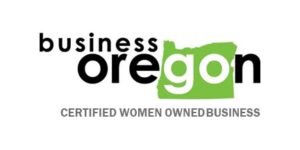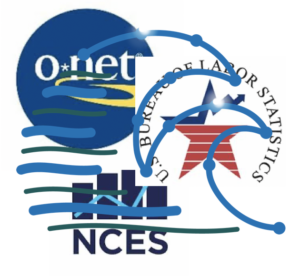 Occupation profiles usually don’t clarify that preferred education level can vary and that wages vary drastically for the same careers.
Occupation profiles usually don’t clarify that preferred education level can vary and that wages vary drastically for the same careers.
Learn how to interpret that information.
Whether using a commercial tool like Focus 2 Career or EMSI Career Coach or using the free online database from O*Net, you will see statistical truths that do not portray the broader range of actual values for two particularly sticky points:
- Typical Education
- Average or Median Wage
//What’s the problem?//
Remember: every single occupation — without exception! — is actually a bucket of different jobs. They are grouped together because they have such a high level of overlap in skills and knowledge that the agencies who analyze this data put these jobs into the same class: the “occupation”. That’s how statistics work. You group together different but similar things and approximate their similarities.
That’s how a square can be a kind of rectangle. That’s how an occupation like “Geoscientist” can include lots of seemingly different jobs in it like Crystallographer, Geologist or Geomagnetist, in addition to Geoscientists.
However, statistical truths mean that not every member of a group has the classification or value that is reported for the whole group. All group members have close to that value in some way, but not the same for many members of the group.
- Typical Education may be a Bachelor degree, but degree levels will be in a spectrum. Healthcare jobs show this the best because we can see colleges building programs around work as it evolves. “X-ray Technicians” who once got hired out of high school and trained on the job are now “Radiologic Technologists” who receive the majority of their training from an Associate’s degree program. People who started in high school are still working, although perhaps close to retirement. New entrants commonly have the degree before getting a job. This spectrum will almost always be present for every occupation.
- Average Wage or Median Wage is a point in the spectrum of reported wages that means 50% of the population of wages were higher than this value and 50% were lower. Wages will always come in a spectrum, typically a very wide range. Commonly, jobs in highly populated areas garner 2-3 or more times the compensation than the same job in a rural area.
- Educator Alert! Commercial tools like Focus2Career, EMSI Career Coach do not tune their data for realistic wages — they use the median wage. That means that schools outside of populated areas have particularly skewed income information. If you have one of these systems, request that they show the income from the 25th percentile (or the 1st quartile) for your system. This is still published government data within the data sets those systems use, so it is possible to customize this to fit your community’s environment better.
//How do we move forward?//
We can make some reasonable assumptions.
For example, we can safely assume that, on the whole, populated areas contain the majority of the higher earning positions, as well as the higher-level educational requirements even though job requirements are essentially the same regardless of local population.
That means that for most rural areas:
- Wage in a rural area is usually quite a bit *lower* than the Median.
- Typical Education can often be lower, as well. However, overtime even in rural areas the same job will require higher and higher levels just as in populated areas.
//How does O*Net report these?//
O*Net profiles report the median wage along with employment statistics for every occupation profile: “Wage & Employment” is an included link in every profile. This is, shall we say, not great for those of us in the sticks attempting to estimate compensation.
That said, O*Net does report a spectrum of education levels. What the Bureau of Labor Statistics reports as the “Typical Education” is the level that is most common.
//InfoSurf Solutions//
- We are migrating towards reporting the 25% percentile of wage, rather than the median, in our eBooks such that even rural areas will get something more in the ball park. Better to get much more than you expected than much less.
- We report education as a single value that comes from the SOC system’s “Typical Education”.
InfoSurf Career Exploration books accelerate the brain storming process because whole groups of possible occupations reveal themselves quickly without diving into any single occupation profile first. These books complement each other, providing possibilities in just a few minutes, regardless of where someone is at in an education or career arc.
No other tools get someone started as fast or as accurately.
We use the same data as O*Net, QualityInfo.org, or tools like those from Burning Glass, EMSI, or Focus 2.
From this top-level view of InfoSurf books, you can take deep dives into the O*Net profiles if you use the eBooks or you can use the occupation names within the eBook to quickly get to the extensive profiles from O*Net.
//Deeper Dives into Sources//
If you’d like to understand the data dicing and analysis, you can read InfoSurf’s distillation or the more extensive explanation in O*Net’s Content Model.





